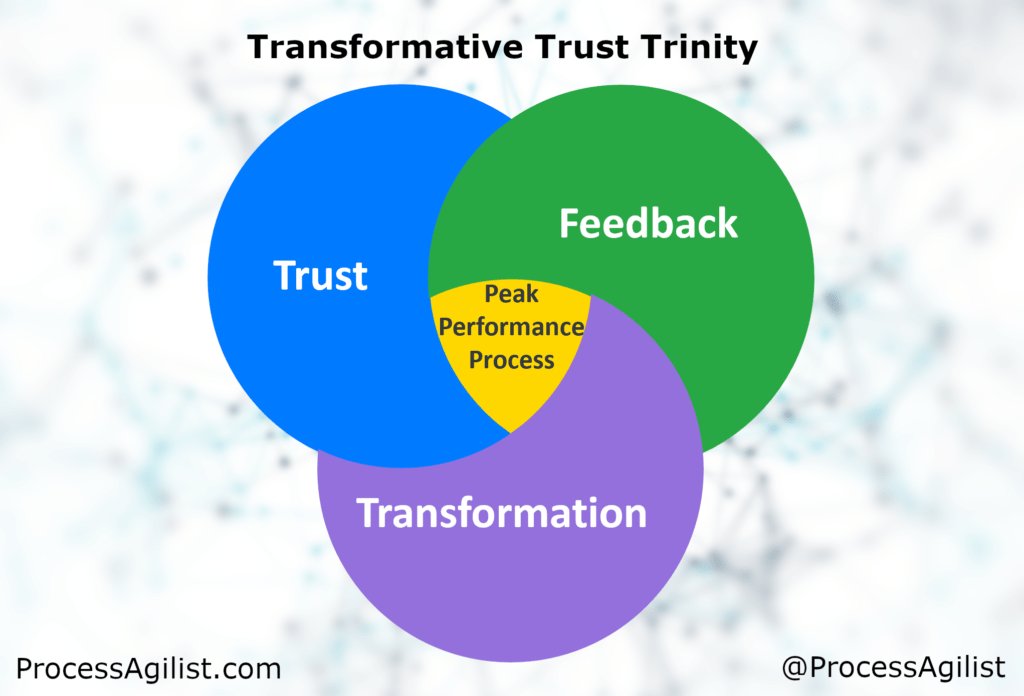Trust Decay is the silent killer of enterprises. Are you nurturing growth or brewing stagnation? When’s the last time your enterprise truly evolved?
The Stakes at Play
To future-proof a business means bracing it for unforeseen challenges, preparing for the unpredictable, and evolving sustainably in the midst of change. Businesses that fail to evolve risk fading into irrelevance. Adaptation isn’t a luxury—it’s a necessity. As enterprises grapple with the latest technologies, navigate shifting societal expectations, and swim into unpredictable economic tides, there’s an overarching realization. A realization that to survive, much less thrive, businesses need not just to change but to evolve sustainably, understanding the subtleties of what lies ahead. Otherwise, they risk becoming historical footnotes. I offer you pragmatic strategies to understand and combat Trust Decay, focusing on concrete actions over theories, to bring about meaningful evolution in enterprises.
Trust Decay: The Silent Assassin Anti-Pattern
Trust Decay is the progressive erosion of foundational belief or confidence within an organization. When present, an invisible corrosive agent silently eats away at the structural integrity of what used to be a rock-solid enterprise. Initially, its effects can be subtle: decreased engagement from employees, a slight drop in customer loyalty, and stakeholders pause just a second longer before investing. Let it fester, and boom! You have a revolving door of staff, plummeting profitability, and a tarnished reputation.
Here’s a scene of the dreaded Trust Decay anti-pattern in action. Stakeholders chime in with product feedback. The result? A whole lot of nothing. Worse yet, a barrage of excuses. Suddenly, the air’s thick with this sense of learned helplessness, pushing trust further into the abyss. Stakeholders start filtering their participation, thinking, “Alright, let’s just flag the big stuff.” But guess what? Still zilch. The whispers grow louder, “Why even throw in my two cents?” Confidence in the value of feedback approaches zero. Then, feedback dries up. But here’s the kicker: the organization pops the champagne. Look at that! Zero issues reported this period! Good job everyone! (Coming soon: Why your KPI’s suck.)
Research from McKinsey[1] highlighted the tangible benefits of mutual trust in workplaces, showing that inclusion and trust lead to a 47% increased likelihood of employee retention and a 90% increased likelihood of inter-employee assistance1. It’s evident: the erosion of trust can cost enterprises in immeasurable ways, but its restoration can lead to unparalleled growth and resilience. Trust isn’t a checkbox or a feel-good factor. It’s an operational imperative.
The Transformative Trust Trinity
Trust, Feedback, and Transformation compose a potent trio, pivotal to mitigating Trust Decay and propelling organizational triumph. This isn’t mere theory; it’s a practical framework designed to solve tangible organizational challenges:
- Trust establishes a foundation, enabling a secure and stable environment conducive to constructive dialogue and interaction.
- Feedback is the catalyst, the agent of transformative change, initiating continuous refinement and innovation.
- Transformation is the resultant metamorphosis, an evolutionary process optimizing organizational structures, processes, and outcomes for enduring success.

Benefits
Implementing this Trinity facilitates:
- Enhanced Communication: Fostering an open dialogic environment.
- Increased Employee Morale and Engagement: Ensuring a committed and harmonious workforce.
- Optimized Productivity: Refining operational processes for maximal output and efficacy.
- Improved Organizational Resilience: Solidifying internal structures against unforeseen challenges and disruptions.
Implementation
By delving deep into this Trinity’s elements, organizations gain:
- Practical Insights: Empowering organizations with knowledge and understanding for efficient and effective implementation.
- Actionable Strategies: Outlining clear, step-by-step approaches to integrate Trust, Feedback, and Transformation seamlessly within organizational fabrics, ensuring alignment with overarching goals and visions.
Challenges and Considerations
While the antidotal relationship between Trust and Trust Decay might seem glaringly obvious, establishing authentic organizational trust is anything but simple. It extends beyond mere honesty and promise fulfillment—it’s about nurturing transparent communication, exhibiting steadfast reliability, and valuing and incorporating feedback meaningfully.
This journey, albeit seemingly straightforward, demands thoughtful planning, analysis, unwavering commitment, and deliberate actions. It’s a journey of transforming superficial understandings into profound insights, simplistic interactions into enriching dialogues, and transient motivations into enduring engagements. In essence, organizational maturity isn’t just about combating Trust Decay—it’s about constructing a resilient, adaptive, and thriving organizational ecosystem in the relentless flux of the business landscape.
Trust and Long-Term Sustainability
Trust isn’t just the emotional currency of today; it’s the linchpin for enterprise longevity. Consider the tech giant, Apple. Beyond its innovative products, it’s the trust in the Apple ecosystem – the belief that every product, from iPads to Macs, would deliver a consistent user experience – that has turned customers into brand evangelists. On the flip side, one can look at the decline of brands like BlackBerry. Once a market leader, their delay in adapting to user needs and feedback led to a slow erosion of trust, contributing significantly to their decline.
But how does trust translate to sustainability? Sustainable growth is often about predicting and preparing for the future. Trust ensures that stakeholders are confident about that future, customers stay loyal, employees remain engaged, and investors continue to invest. And as businesses face increasing scrutiny about not just their products but also their role in society at large, trust ensures they can pivot without losing their base.
Iterative Growth & The Fail Forward Formula
Iterative Growth & The Fail Forward Formula
Understanding and addressing failure is a steppingstone to building resilient and adaptive organizations. The Fail Forward Formula and Iterative Growth model stand out as pragmatic, actionable frameworks designed to counter Trust Decay and bolster organizational resilience. They are more than theoretical concepts; they are adaptable solutions for modern enterprises, enabling a culture where continuous learning and improvement are embedded into the organizational ethos.
The Practical Application of the Fail Forward Formula
The Fail Forward Formula, intertwined with the principles of the PDCA (Plan-Do-Check-Act) cycle[2], turns setbacks into opportunities for refinement and enhancement. This is not about glorifying failure but about cultivating a learning-centric culture where every setback is an opportunity to improve and innovate. In such an environment, the corrosive impacts of Trust Decay are mitigated as openness and constructive communication are emphasized, fostering organizational adaptability and resilience.
PDCA: A Practical Approach to Continuous Learning and Improvement
Delving into the essence of the PDCA cycle reveals its alignment with principles of continual learning and adaptability. It’s more than a theoretical concept—it’s a practical blueprint for constant enhancement and learning from failures, one that has been adopted and refined by industry leaders such as Toyota to achieve excellence.[3]
Why Your Metrics Are Misleading
Every manager knows W. Edwards Deming’s wisdom: “If you can’t measure it, you can’t manage it.” This leaves leaders scrambling to find metrics by which to manage their organizations. Notice, I said “manage”, not “lead”. We translate how people “feel” into numbers through surveys, trying to manage based on these quantified feelings. While metrics are crucial for management when they’re accurate, they’re a recipe for disaster when they’re not.
Metrics are there to inform, not to lead. When used correctly, they offer invaluable insights into organizational health and operation, guiding effective management decisions. When distorted or misused, they can lead to poor choices and organizational issues. It’s vital to maintain a focus on accuracy and relevance in metrics, ensuring they reflect the true state of affairs and serve as reliable management tools.
When metrics stop reflecting reality, it’s often a sign of underlying organizational issues. Consider the issues plaguing many companies using self-reporting tools. Employees, fearing retribution or simply disillusioned with the system, often provide data that paints a rosier picture than what’s on the ground. Without trust, even the best metrics devolve into mere vanity numbers.

For instance, companies like Wells Fargo faced massive scandals when employees, under immense pressure to hit targets, engaged in unethical practices. The metrics seemed outstanding on paper, but the erosion of trust both internally and from the public proved catastrophic.

- When a measure becomes a target, it ceases to be a good measure (Goodhart’s Law)
- Measures tend to be corrupted/gamed when used for target-setting (Campbell’s Law).
- Monitoring a metric may subtly influence people to maximize that measure (The Observer Effect).
The true way forward is to create an environment where trust prevails, and metrics are used as accurate reflective tools rather than end goals, ensuring genuine organizational health and integrity.
Journey Ahead: Practical Insights and Actionable Strategies
Ready for More?
In this series, we are diving deep into practical aspects and real-world applications of these transformative models, providing you with actionable insights and strategies. We are focusing on tangible, implementable solutions that can drive real change in organizations, fortifying them against the pervasive impacts of Trust Decay.
[1] McKinsey & Company. “Hybrid work: Making it fit with your diversity, equity, and inclusion strategy.” McKinsey & Company. 2022. https://www.mckinsey.com/capabilities/people-and-organizational-performance/our-insights/hybrid-work-making-it-fit-with-your-diversity-equity-and-inclusion-strategy
[2] Deming, W. Edwards. “Out of the Crisis.” Massachusetts Institute of Technology, Center for Advanced Engineering Study, 1986.
[3] Liker, Jeffrey K. “The Toyota Way: 14 Management Principles from the World’s Greatest Manufacturer.” McGraw-Hill, 2004.




